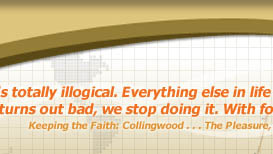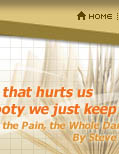Hungry Planet:
What the World Eats
by Peter Menzel, Faith D'Aluisio
Overview
From the Publisher
Publishers Weekly
For their enormously successful Material World, photojournalist Menzel and writer D'Aluisio traveled the world photographing average people's worldly possessions. In 2000, they began research for this book on the world's eating habits, visiting some 30 families in 24 countries. Each family was asked to purchase-at the authors' expense-a typical week's groceries, which were artfully arrayed-whether sacks of grain and potatoes and overripe bananas, or rows of packaged cereals, sodas and take-out pizzas-for a full-page family portrait. This is followed by a detailed listing of the goods, broken down by food groups and expenditures, then a more general discussion of how the food is raised and used, illustrated with a variety of photos and a family recipe. A sidebar of facts relevant to each country's eating habits (e.g., the cost of Big Macs, average cigarette use, obesity rates) invites armchair theorizing. While the photos are extraordinary-fine enough for a stand-alone volume-it's the questions these photos ask that make this volume so gripping. After considering the Darfur mother with five children living on $1.44 a week in a refugee camp in Chad, then the German family of four spending $494.19, and a host of families in between, we may think about food in a whole new light. This is a beautiful, quietly provocative volume. (Nov.) Copyright 2005 Reed Business Information.
My thoughts
Wow. Just wow. This is an amazing book, and if ever you start feeling sorry for yourself or envious of others, just open the cover of this book and humble yourself. You'll soon be counting your blessings. And perhaps learning a thing or two about life.
When I first purchased this book, I took it to work and played a few games with it. My co-workers would turn to the summary page, point to a family, then we'd turn to that section to see what kinds of food they ate. It was silly and fun and took the tone of Oh! Oh! Let me go next! Wow! Look what they ate!
It wasn't until I sat down to read the book that I took it seriously and felt its impact. Not only is the photography in this book outstanding, but the text is incredible. It should be required reading in classrooms worldwide to help us gain an understanding of the lives of people around the world, some more fortunate than ourselves, others much less fortunate. The book isn't simply about food, rather it's about families.
I love a good coffee table book for the pictures, but this one goes above and beyond the norm. It's worth reading, and it's worth keeping.
Favorite Passage
Twelve-year-old Amna Mustapha and her cousin Fatna tie gourds and plastic jugs to the wooden saddles on their fathers' donkeys, then hoist themselves up for the morning ride across the plain of east central Chad to fetch the day's water. There are no family arguments about whose turn it is to go, or who herded the cattle yesterday and twice last week. Children here learn at a young age what's expected of them, and there's no room for argument if everyone wants to eat.
Although surrounded by livestock, Amna's father, Mustapha, and his family eat red meat infrequently. When they do eat it, they rarely slaughter an animal from their herd because that would deplete their assets. Instead, they split the cost of an animal with several families and butcher it for feasts like the celebration at the end of Ramadan. When the family has meat, Mustapha's wife Khadidja dries some, and reconsitutes it in the soup that family members eat with their thrice-daily porrige, called aiysh. Milk, too, is scarce; Mustapha's cows aren't big milk producers because there isn't much around for them to eat. Khadidja is able to extract only about a cup of curds a day after the scrawny calves have suckled; she adds it to the soup, effectively splitting the milk among nine people.







